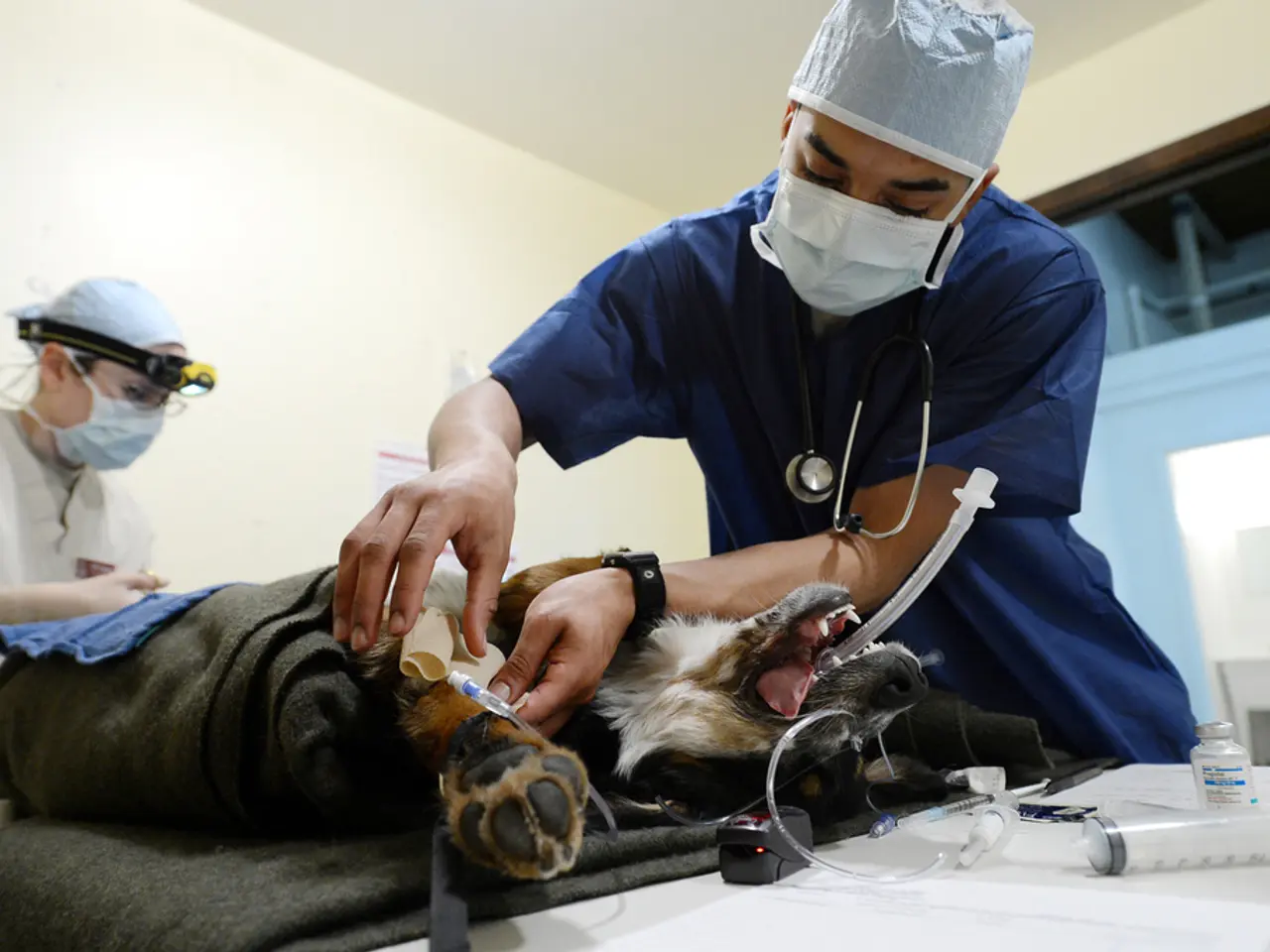CPAP Devices: Functionality, Frequently Asked Questions, and Additional Information
In the realm of sleep disorders, sleep apnea is a significant concern. Untreated sleep apnea can lead to a host of serious complications, including high blood pressure, diabetes, stroke, heart disease, and early death [1][2][3]. Thankfully, CPAP (Continuous Positive Airway Pressure) therapy offers a solution. Here's a comprehensive guide to navigating CPAP therapy for sleep apnea.
Step 1: Consult Your Doctor
Your first step is to visit your primary care physician to discuss your sleep apnea symptoms and medical history. The doctor will conduct an initial physical examination and assess your sleep habits [4].
Step 2: Sleep Study
If sleep apnea is suspected, your doctor will refer you to a sleep specialist who will order a sleep study—either in a sleep lab (polysomnography) or a home sleep test—to diagnose sleep apnea and determine its severity [4].
Step 3: Get a Prescription
Based on the sleep study results, the sleep specialist will provide a prescription for a CPAP machine, including the prescribed air pressure settings [4].
Step 4: Obtain the CPAP Machine
With the prescription, you can then purchase or rent a CPAP machine through a medical equipment provider or supplier [4]. Insurance or Medicare may cover some or all of the costs, typically requiring documentation of diagnosis and ongoing usage benefits.
Step 5: Trial and Follow-up
Many insurance plans, including Medicare, cover a trial period (usually around three months) to ensure the CPAP treatment is effective and that you use it properly. Continued coverage depends on demonstrating benefit from the treatment [4].
Step 6: Long-Term Use and Supplies
After the trial, if therapy is successful, ongoing coverage for supplies like masks, tubing, and filters is usually available. Ownership of the machine may come after a rental period (such as 13 months with Medicare) [4].
Remember, it's essential to clean the mask and tubing regularly and replace any parts as necessary to avoid skin irritation. If a CPAP machine is not working effectively, you may experience air leaks, discomfort, dry eyes or mouth, difficulty sleeping, and continued symptoms of sleep apnea [4].
Health insurance providers typically provide a CPAP machine and mask to people prescribed CPAP therapy for sleep apnea by a doctor [4]. Using a humidifier with a CPAP machine or using a saline nasal spray may help reduce unwanted symptoms [4].
For veterans, qualifying for VA disability compensation requires a formal diagnosis and evidence of service connection [5]. If you're using an autotitrating CPAP machine, it delivers different air pressures, varying between low and high pressure settings [4].
When using a CPAP machine, some individuals may experience bloating. If this occurs, they should stop using the machine and contact a doctor [4]. It's generally important to continue using a CPAP machine as advised by a doctor to treat sleep apnea and prevent complications [4].
Doctors can check data cards on CPAP machines to ensure proper usage and monitor the management of sleep apnea [4]. The American Academy of Sleep Medicine (AASM) highlights three types of CPAP masks: nasal, nasal pillow, and full face [4].
The side effects of using a CPAP machine may include dry mouth, dry eyes, congestion, runny nose, irritation from mask straps, and nosebleeds [4]. However, a CPAP machine is generally safe to use and may help prevent serious complications of sleep apnea such as heart disease and stroke [1][2][3].
Most CPAP machines have a ramp or timed pressure setting that gradually increases air pressure as a person sleeps [4]. People receive a regular CPAP machine after a monitoring and fitting procedure called a titration study, while autotitrating CPAP machines are prescribed without this study [4].
In conclusion, navigating CPAP therapy for sleep apnea involves several steps, but with the right guidance and consistent use, it can help manage this condition effectively and prevent serious complications. Always consult your doctor for personalised advice and recommendations.
[1] American Sleep Apnea Association [2] National Heart, Lung, and Blood Institute [3] Mayo Clinic [4] National Sleep Foundation [5] U.S. Department of Veterans Affairs
- Sleep apnea is a respiratory condition that can lead to chronic diseases such as high blood pressure, diabetes, stroke, and heart disease if left untreated, which are common complications of sleep apnea as reported by the American Sleep Apnea Association, National Heart, Lung, and Blood Institute, and Mayo Clinic.
- Health and wellness, including mental health, can be significantly impacted by sleep apnea, a sleep disorder that requires proper treatment like CPAP therapy, a solution discussed in a comprehensive guide for navigating its use.
- Medical-health conditions associated with sleep apnea include hypertension, diabetes, and cardiovascular diseases, which might require chronic disease management and regular monitoring, as suggested by the National Sleep Foundation.
- In the realm of sleep disorders, sleep apnea, characterized by snoring and sleep disruptions, can potentially lead to serious complications. Fortunately, science has proven that CPAP therapy can help mitigate these risks, as supported by research from the American Sleep Apnea Association, National Heart, Lung, and Blood Institute, Mayo Clinic, and National Sleep Foundation.




